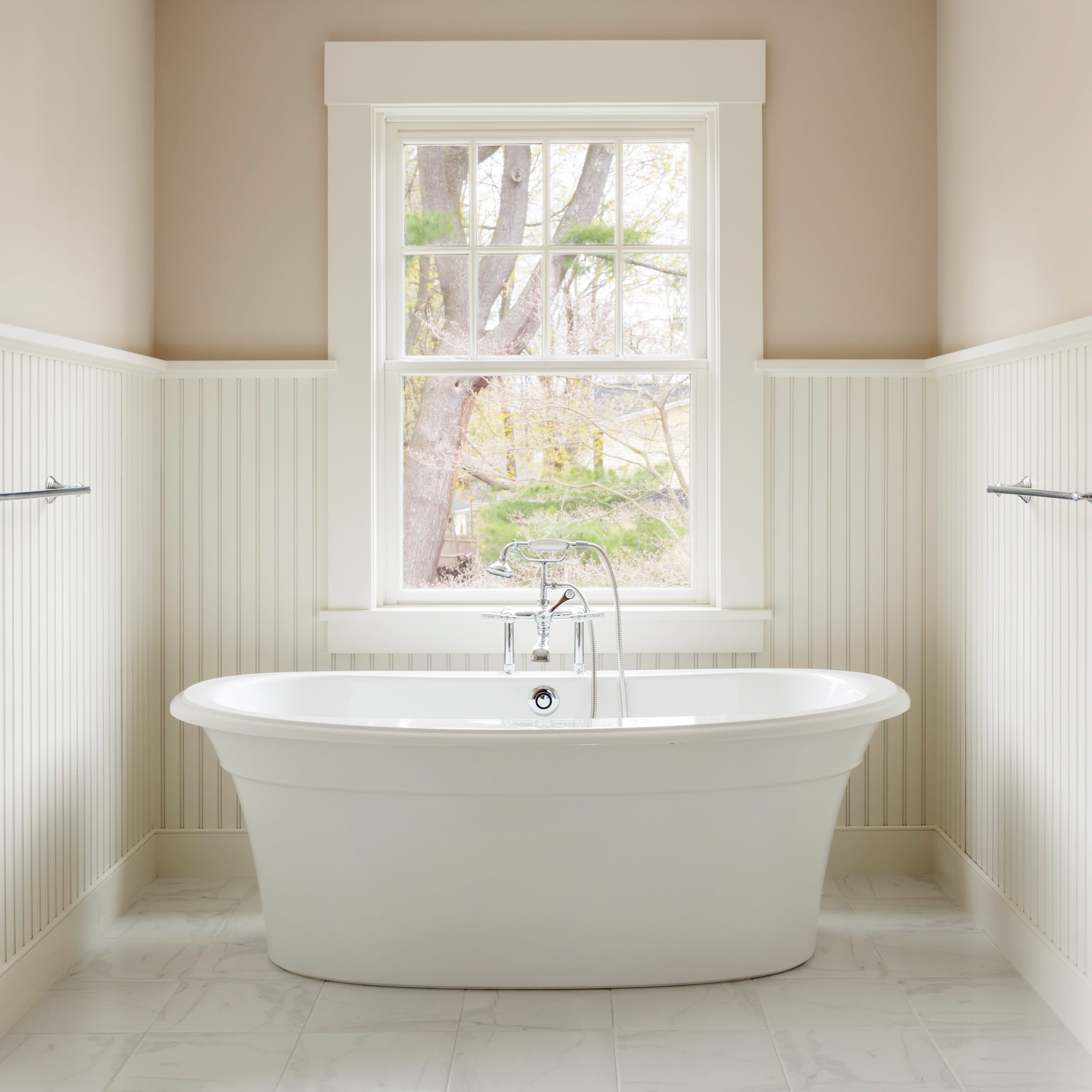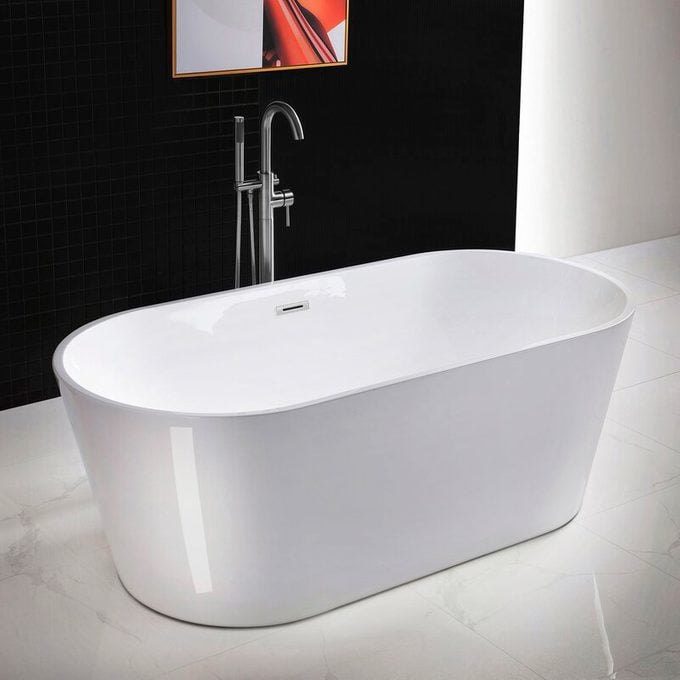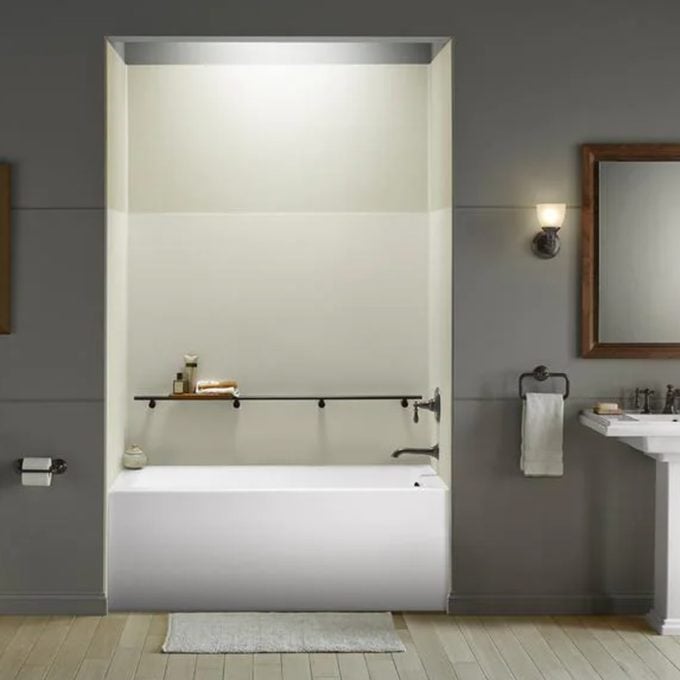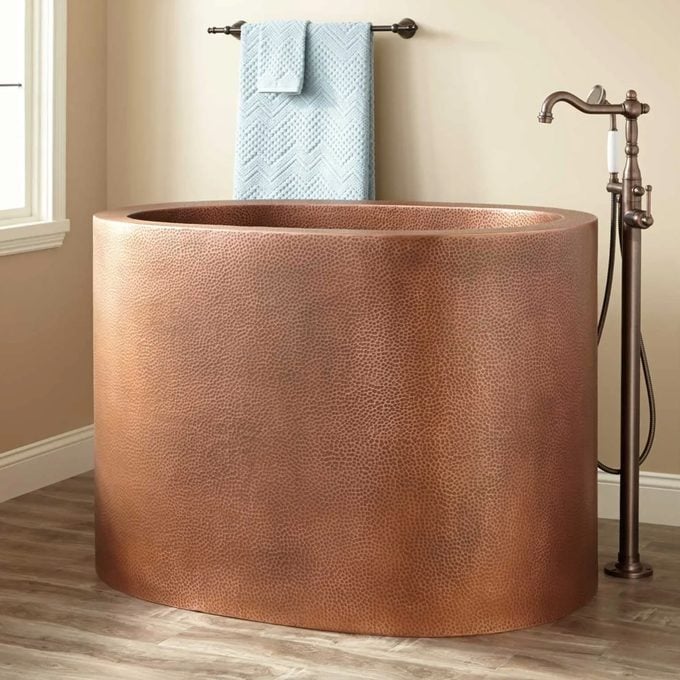Is a soaking tub as luxurious as it sounds? If you're considering one for your home, here's what you'll want to know before you buy.
Our editors and experts handpick every product we feature. We may earn a commission from your purchases.Learn more.


Is a soaking tub as luxurious as it sounds? If you're considering one for your home, here's what you'll want to know before you buy.
Our editors and experts handpick every product we feature. We may earn a commission from your purchases.Learn more.
Soaking tubs may seem like the epitome of decadence, but this type of bathtub certainly isn’t new. Let’s take a look at what they are and whether one is right for you.
On This Page
Soaking tubs, by their very nature, are places to luxuriate. Designed to submerge your body, they’re perfect for extended, leisurely bathtub soaks with or without bubbles, delivering soothing relaxation and relief from aches and pains after a long day.
Soaking tubs come in various depths, dimensions and styles. Many come with extra features such as ergonomic contours for comfort, heaters, mood lighting and whirlpool jets for an in-home spa experience. Some manufacturers offer customization to accommodate taller and larger bathers. Make yourself a priority with these relaxing home spa ideas.
When choosing a soaking tub for a bathroom in a new build or renovation, it’s important to take these factors into account:
Pro tip: Make sure your water heater can provide enough hot water to fill the tub. Often this gets overlooked. Upgrading the water heater adds unexpected time, hassle and expense to the project, so do your homework first.
Soaking tubs can be made of porcelain-enameled cast iron, ceramic, fiberglass, resin, acrylic, copper, wood, concrete, stone or marble. They also come in several styles, from traditional to contemporary to transitional (an eclectic mix of the two).
They can be extremely luxurious and cozy. They can also be quite uncomfortable. A 6-foot 4-inch, 250-pound person would need a larger tub than a five-foot, 120-pound person. A lot depends on how well the soaking tub meets a bather’s needs. Keep the size of your users at the forefront when you make your choice.
Bret Hepola of All City Plumbing in Minnetrista, Minnesota, a master plumber with more than 21 years of experience, recommends hiring a licensed plumber to install your soaking tub. But if you feel you have the DIY chops to take on such an ambitious bathroom project yourself, be prepared for anything.
“A remodel typically requires removal of flooring and walls to install the waterlines, drain and vent per local code,” says Hepola. In the midst of that, you could encounter unforeseen conditions that impact the layout. If the tub isn’t roughed-in correctly, you might need to tear out flooring, cut open walls, remove tile, etc., complicating the job.
“There is no room for error,” he says.
Hepola favors one-piece tubs with integrated overflows drain connections over two-piece tubs. Why? First, if you spring a leak after installation, the faucet access on some requires the removal of one of the pieces. They’re also more complicated to install.
“I just can’t emphasize a one-piece enough!” he says.
Standard soaking tub prices begin at around $400 and go up to $5,000 or more. As with most things, the cost depends on size, materials and embellishments. Cast iron tubs tend to be pricier, but they also last longer and retain heat better. Basic acrylic tubs are affordable and lightweight, making them a good choice for DIYers on a budget.
The main thing? Before purchasing a soaking tub, make sure you fit in it. “Length and depth,” Hepola says. “No one wants to be scrunched up in a tub that is meant for relaxing.”

Like putting a square peg in a round hole, finding a soaking tub that fits into an existing bathroom can be tricky. It’s especially challenging in small bathrooms with limited floor space.
The Woodbridge Freestanding Soaking Acrylic Bathtub is a great option that’s as attractive as it is space-saving. Despite its compact size, this soaker measures 14-1/2-inches deep, rivaling many full-sized competitors in immersability.
An overflow slot allows the tub to be filled to its 60-gallon capacity without spilling over, and it comes with a choice of five faucet finishes. Add a bamboo bath caddy to hold scented candles, bath salts or a favorite book. Ahhh.

If you’re looking for a soaking tub in a three-wall, recessed design, the Kohler Underscore Alcove Bathtub fits the bill. A mid-priced option, the durable acrylic Underscore resists chips and cracks, with molded lumbar support and a sloped backrest for comfort.
A textured bottom surface promises safer ins and outs. Despite its depth, it has a low step-over height, making it ADA-compliant.

The Raksha Hammered Copper Japanese Soaking Tub by Signature Hardware lets you unwind in extra-deep luxury. This splurge-worthy tub is hand-crafted, using a French hot process to ingrain the patina into the 16-gauge, polished copper. The result is a rustic-chic look.
Because its water depth to the rim is a profound 26-1/4 inches, you can look forward to hours of pampering soaks.